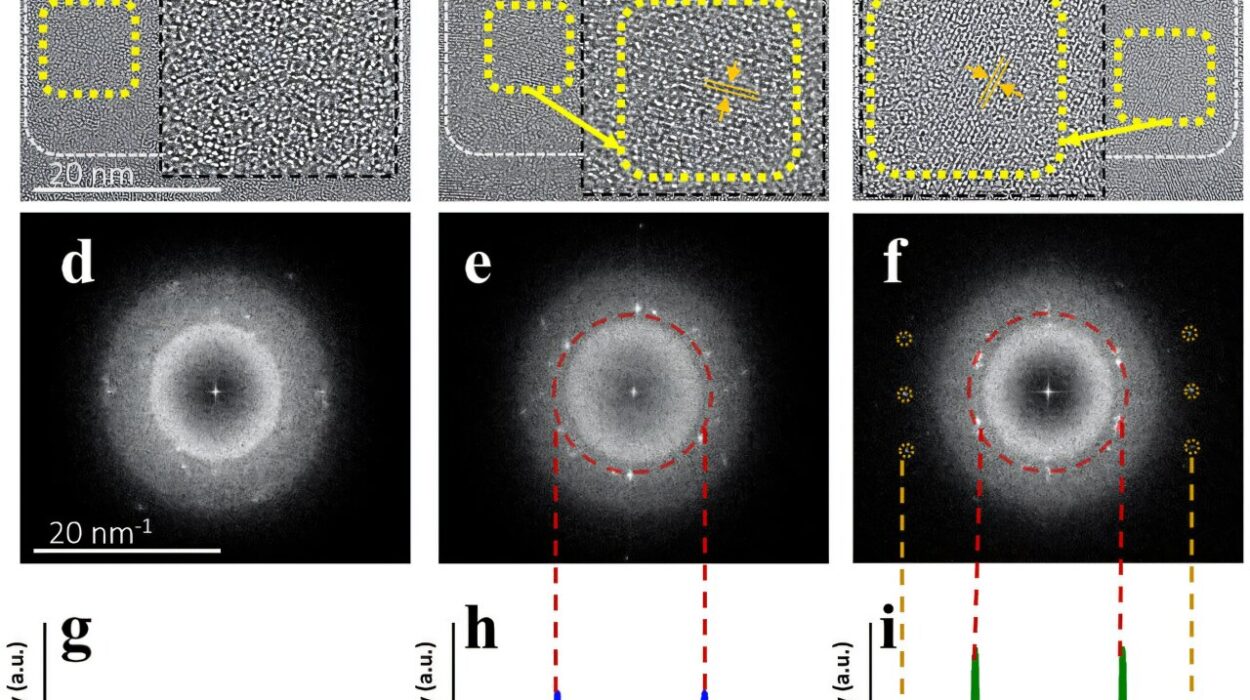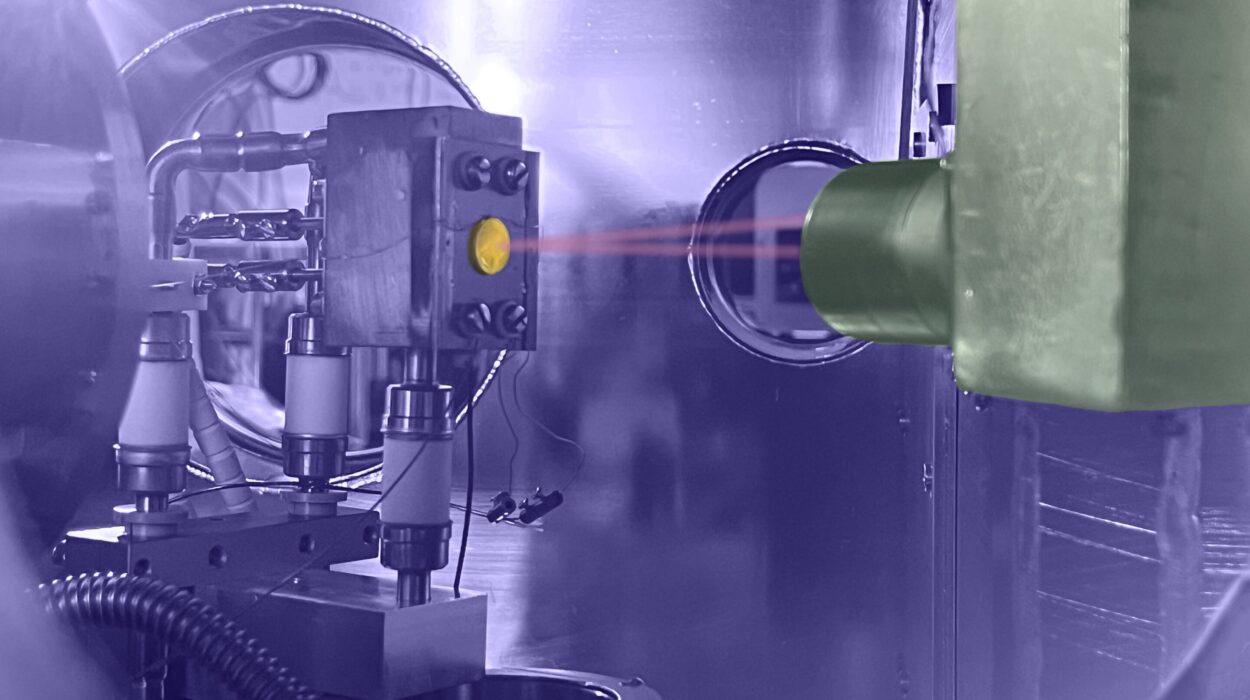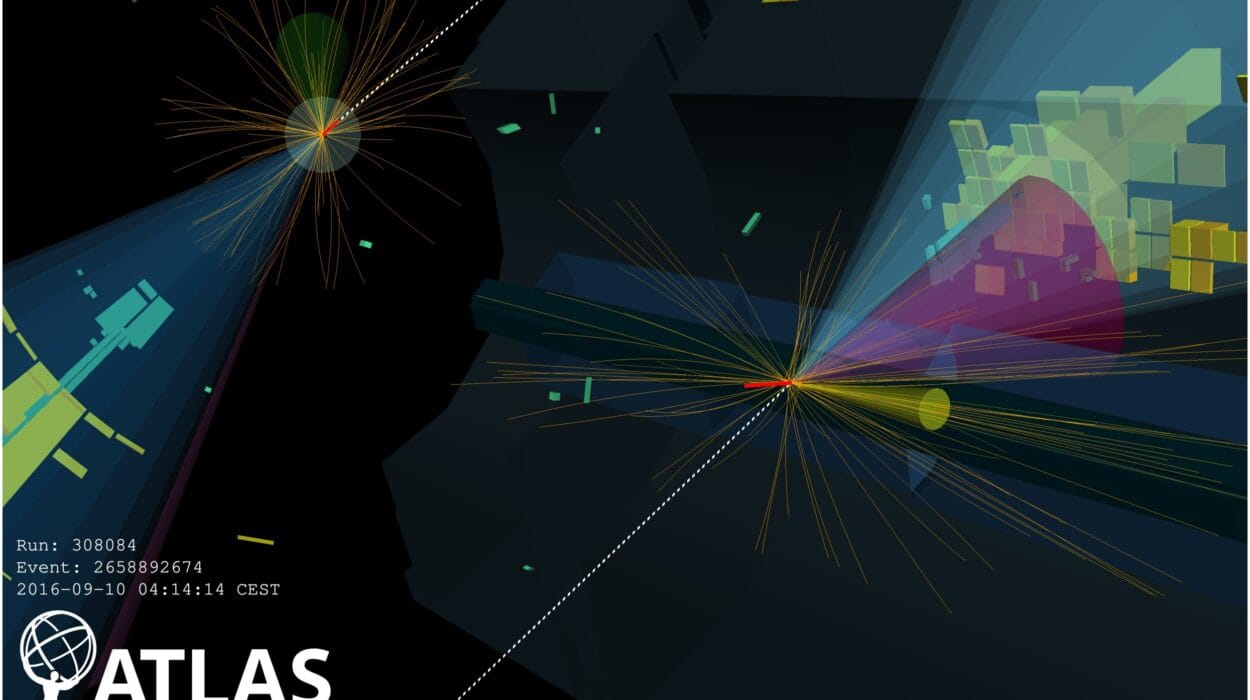When Albert Einstein introduced his Special Theory of Relativity in 1905, he didn’t just rewrite the rules of motion—he etched a cosmic speed limit into the very structure of the universe. According to Einstein’s theory, the speed of light in a vacuum—approximately 299,792,458 meters per second—is not just fast; it’s the ultimate limit. Nothing with mass can ever reach it, let alone surpass it. The consequences of this boundary are profound. Time dilates, space contracts, and simultaneity becomes relative—all woven into the fabric of spacetime.
But why can’t anything go faster? The answer lies in how energy and mass behave as objects accelerate. As something with mass speeds up, it requires more and more energy to continue accelerating. Approaching the speed of light, its relativistic mass increases without bound, demanding infinite energy to reach light speed. And in our universe, infinite energy doesn’t exist.
Yet, the human imagination is not so easily restrained. In laboratories and science fiction alike, scientists and dreamers have asked: Can anything—anything at all—move faster than light? To explore that question, we must journey through the boundaries of modern physics, from particle accelerators to black holes, and even into the speculative realms of quantum mechanics and spacetime geometry.
Tachyons: The Hypothetical Particles of Speed
In the early days of quantum theory and relativity, some physicists considered the possibility of particles that naturally traveled faster than light. They called them tachyons, derived from the Greek word tachys, meaning “swift.” Unlike normal particles—known as bradyons—which always travel below light speed, tachyons would never be able to slow down to or below the speed of light.
According to theoretical equations, tachyons would possess an imaginary mass. Not imaginary in the sense of fictional, but in the mathematical sense—they would require the square root of a negative number to describe their mass. This violates the foundational assumptions of Einsteinian relativity and challenges causality: events could theoretically happen before their causes, resulting in paradoxes.
While fascinating on paper, tachyons have never been observed. Despite decades of searching in high-energy particle accelerators, no evidence has emerged. Most physicists now regard tachyons as useful mathematical artifacts rather than physical entities. Still, the idea continues to provoke thought: if tachyons did exist, they would be living proof that faster-than-light (FTL) travel was possible, albeit not in the way science fiction often portrays it.
Cherenkov Radiation: The Sonic Boom of Light
Though nothing can break the light-speed barrier in a vacuum, things get fuzzier when we consider light traveling through matter. In water or glass, light slows down. This allows charged particles, like electrons, to momentarily exceed the local speed of light in that medium. The result is Cherenkov radiation—a bluish glow emitted when a particle travels faster than light can in that substance. It’s the optical equivalent of a sonic boom.
This doesn’t violate relativity because these particles aren’t exceeding the true cosmic speed limit—just the reduced speed of light in a particular material. Still, it demonstrates that our intuitions about speed can be deceiving. In fact, Cherenkov radiation is used in nuclear reactors and particle detectors as a telltale signature of high-energy interactions. It shows that “faster than light” isn’t a simple phrase—it depends on the medium, the frame of reference, and the precise definitions involved.
Quantum Entanglement: Spooky Action or Instant Messaging?
Perhaps the most tantalizing hint of faster-than-light phenomena comes from quantum mechanics. In the strange and counterintuitive world of the quantum, particles can become entangled, meaning their properties become correlated in such a way that measuring one instantly determines the state of the other—even if they’re light-years apart.
Einstein famously derided this as “spooky action at a distance.” It seemed to violate the principle that no information can travel faster than light. But decades of experiments have confirmed that entanglement is real. When two particles are entangled, measuring the spin of one immediately tells you the spin of the other, regardless of the distance.
Does this mean information is traveling faster than light? Not quite. Entanglement correlations can’t be used to transmit usable information instantaneously. They only manifest after both ends are measured and the results compared through classical, light-speed communication. In other words, the effect is real but not directly exploitable for faster-than-light communication. Nature keeps her secrets—entanglement challenges our understanding of locality and causality, but it doesn’t let us break the speed limit.
Wormholes: Shortcuts Through Spacetime
If speed itself is limited, could we cheat by changing the distance? That’s the idea behind wormholes—hypothetical tunnels through spacetime that connect two distant points via a shortcut. Imagine folding a piece of paper and punching a hole through it. The shortest distance between two stars might not be a straight line, but a wormhole.
Einstein himself, along with physicist Nathan Rosen, proposed the concept of “Einstein-Rosen bridges” in 1935—precursors to the modern wormhole idea. Since then, wormholes have captured the imagination of both physicists and science fiction authors alike. They seem to offer a loophole in the light-speed barrier: rather than moving faster, you move smarter.
But wormholes come with serious caveats. They require exotic matter with negative energy density to remain open and stable. No known material possesses such properties, though quantum field theories suggest it might be theoretically possible. Moreover, traversable wormholes would raise deep paradoxes involving time travel, causality, and the structure of spacetime. So far, wormholes remain purely theoretical—plausible within general relativity, but utterly speculative in practice.
Warp Drives: Bending Space Instead of Breaking It
Perhaps the most iconic concept of faster-than-light travel comes from warp drives, popularized by Star Trek but rooted in real theoretical physics. In 1994, physicist Miguel Alcubierre proposed a solution to Einstein’s field equations that describes a “warp bubble.” In this configuration, space in front of a ship contracts while space behind it expands, allowing the vessel to ride a wave of spacetime like a surfer.
Crucially, within the bubble, the ship is at rest relative to its local spacetime—so it doesn’t violate the speed of light locally. But the bubble itself can move arbitrarily fast through the universe. This idea turned heads in the physics community, though it soon became clear that warp drives would require vast amounts of negative energy—more than the mass-energy of the entire observable universe.
Recent refinements have proposed “nano-warp” designs with reduced energy requirements, bringing the concept into the realm of speculative engineering rather than outright fantasy. But even the most optimistic assessments place a working warp drive many centuries, if not millennia, in the future—if it’s possible at all. Still, the Alcubierre drive stands as a shimmering beacon: a mathematically plausible way to cheat light-speed without breaking relativity.
The Limits of Causality and the Paradoxes of Time
Any discussion of FTL inevitably runs into the question of causality. In relativity, faster-than-light communication implies the possibility of sending messages back in time. That opens a Pandora’s box of paradoxes—the famous “grandfather paradox,” for example, where you travel back and prevent your own existence.
These time-travel implications stem from the relativity of simultaneity. What is “now” for one observer isn’t “now” for another moving at a different speed. If you could send a signal faster than light, in some frames it could arrive before it was sent. This isn’t just theoretical nitpicking—it’s baked into the geometry of spacetime. Physicists call this the violation of Lorentz invariance.
To preserve causality, most physicists assume that FTL travel or communication is either impossible or confined to frameworks where paradoxes are avoided by some deeper principle—like the chronology protection conjecture proposed by Stephen Hawking. This idea suggests that the laws of physics conspire to prevent time travel, possibly by destroying wormholes or warp bubbles before they become paradoxical.
Beyond Relativity: New Theories and Possibilities
If light speed is an absolute limit in Einstein’s relativity, perhaps the real answer lies in going beyond it. Theories such as loop quantum gravity, string theory, and brane cosmology all suggest deeper layers of reality where our current understanding breaks down. In these frameworks, spacetime might not be smooth but granular or multi-dimensional.
Some variants of string theory, for example, involve additional spatial dimensions beyond the familiar three. In such scenarios, particles might take shortcuts through these hidden dimensions, effectively appearing to travel faster than light from our limited perspective.
Other speculative ideas involve modifications to special relativity at very high energies, where Lorentz symmetry might be broken or altered. Some versions of doubly special relativity propose that both the speed of light and a fundamental energy scale (like the Planck energy) are invariant, leading to new insights into high-energy physics and quantum gravity.
These ideas remain at the fringes of mainstream physics—mathematically interesting but experimentally unverified. Still, they show that our understanding of speed, light, and causality is far from complete.
Experimental Limits and Modern Particle Accelerators
Since Einstein’s time, physicists have rigorously tested the speed of light limit through countless experiments, pushing particles ever closer to the cosmic speed limit. Particle accelerators like CERN’s Large Hadron Collider (LHC) accelerate protons to energies so high that they reach speeds within a tiny fraction of a hair’s breadth of the speed of light. These experiments confirm again and again that as particles approach light speed, their mass effectively increases, requiring more energy for ever-smaller increments of speed.
These observations align perfectly with Einstein’s predictions—nothing with rest mass ever crosses the threshold. Instead, particles asymptotically approach the speed of light, forever chasing an unreachable goal.
Yet, the quest to understand speed and energy at extreme scales remains one of the frontiers of physics. By smashing particles at record energies, scientists not only probe the nature of matter but also test whether subtle violations of relativity exist at high energies. So far, no credible evidence suggests anything breaks the speed limit in vacuum, but experiments continue, leaving open the tantalizing possibility that new physics might emerge at even higher energies or smaller scales.
Cosmic Neutrinos and the OPERA Controversy
In 2011, the physics world was rocked by an announcement that seemed to challenge the speed-of-light barrier. The OPERA experiment, based in Italy, reported neutrinos traveling from CERN to Gran Sasso faster than the speed of light by a tiny fraction.
This claim sent shockwaves through scientific and popular media. Could neutrinos—ghostly, nearly massless particles that hardly interact with matter—really be outpacing photons? If confirmed, the discovery would rewrite physics textbooks and open a floodgate of new questions about causality, relativity, and the fundamental workings of the universe.
After intense scrutiny, however, the result was found to be due to instrumental errors: a loose fiber optic cable and a timing glitch. The neutrinos weren’t breaking the speed of light after all. The episode demonstrated the importance of rigorous verification in science and the resilience of the speed-of-light principle under pressure. It also highlighted how experimental physics is a human endeavor full of surprises, missteps, and cautious optimism.
The Role of Information in Physics and Light Speed
Understanding the speed of light as a speed limit isn’t just about matter and energy—it’s deeply tied to information itself. Modern physics reveals that information cannot propagate faster than light without violating fundamental principles.
When we say “information,” we mean any causal influence that can affect events, convey messages, or cause change. The speed limit ensures a consistent causal structure: causes precede effects in all frames of reference. Without this limit, the universe would become a chaotic place where paradoxes undermine predictability.
Quantum mechanics, despite its peculiarities like entanglement, respects this limit at the level of usable information. No “faster-than-light messaging” has ever been demonstrated. Even in cutting-edge quantum computing and communication experiments, causality remains intact.
This connection between information and light speed is more than a technicality—it forms the backbone of how reality is ordered. It preserves the arrow of time, the sequence of events, and the coherence of physical law.
What Light Speed Means for Space Travel and Interstellar Dreams
The speed of light limit casts a long shadow over human ambitions for interstellar travel. Even the closest stars lie light-years away, meaning it takes years for light—and any spacecraft—to traverse the distance.
At present, our fastest probes barely scratch 0.0001 times the speed of light. Traveling to the nearest star system, Alpha Centauri, would take tens of thousands of years. This realization has led scientists and engineers to dream about new propulsion methods that might get us closer to a significant fraction of light speed, such as ion drives, nuclear propulsion, or laser sails.
Yet, pushing past or even near light speed introduces daunting challenges: enormous energy requirements, time dilation effects that would see travelers aging more slowly relative to Earth, and the hazard of interstellar dust impacting at relativistic speeds.
Here, the ideas of warp drives and wormholes become more than theoretical curiosities—they offer the only glimpses of practical faster-than-light travel that might overcome these immense hurdles.
The Philosophical and Cultural Impact of Light-Speed Limits
The notion of a universal speed limit has deeply influenced philosophy, culture, and even human imagination. It challenges our understanding of time, space, and our place in the cosmos.
Science fiction has long grappled with this limit—crafting stories of warp drives, hyperdrives, and instantaneous teleportation. These ideas captivate us because they promise to break free from the constraints that nature seems to impose.
At the same time, the speed limit fosters humility. It reminds us that the universe is vast and indifferent, that even our fastest ships are slow compared to cosmic scales. It shapes our expectations about exploration, communication, and the ultimate fate of intelligent life.
Moreover, the speed limit connects physics with metaphysics, touching on the nature of reality, causality, and the flow of time itself. It reveals that the cosmos isn’t just a collection of objects moving in space, but a dynamic and interwoven fabric where the laws of physics define what is possible.
Conclusion: Can the Speed of Light Be Beaten, or Just Bent?
The question “Can anything go faster than light?” is more than a scientific query—it’s a journey to the edge of knowledge, where physics, philosophy, and imagination converge.
Current evidence and theory emphatically state no object with mass can surpass the speed of light in vacuum. The speed of light remains the ultimate speed limit, confirmed by over a century of experiments and observations.
However, nature offers subtle ways to “bend” the rules. Particles can exceed the speed of light in materials; quantum entanglement hints at mysterious correlations; spacetime might be warped to allow shortcuts; and speculative physics suggests hidden dimensions or new physics beyond our current grasp.
These nuances reveal that the question is not just about speed but about the structure of reality itself. While nothing seems to physically break the cosmic speed limit, the universe remains rich with possibilities that challenge our intuitions.
In the end, the speed of light is not just a number—it’s a gateway to understanding the universe’s deepest laws, its limitations, and its boundless mysteries. And as science marches forward, perhaps one day, we will find new ways to travel, communicate, or understand the cosmos—pushing beyond the speed of light, not by brute force, but by cleverness, insight, and the ever-expanding frontier of human knowledge.






